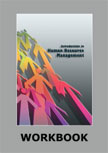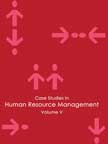Remaking JC Penney's Organizational Culture
|
ICMR HOME | Case Studies Collection 
Custom Search
Please note: |
||||||
|
"The business isn't just about store managers any more - it's more complicated than it used to be, and I need to motivate employees from the entry level to the officers. If I had a choice to honor the past and lose, or move forward and win, I pick winning."1 - Myron E (Mike) Ullman III, chairman and CEO, JC Penney Corporation, Inc., in 2006. "They're putting the cart before the horse. Culture changes are glacial. Trying to appear to have made quick culture changes by jumping forward to simulate success is a waste of time and energy, and falsely inflates expectations. It's like trying to leapfrog over the real work, the real task of genuine culture change. First come respect and inclusion, then come first names, nicknames, and March Madness brackets."2 - Michael Banks, Partner-Owner, Select Marketing LLC3, in 2006. "Changing the mindset and culture of the employees ALWAYS has to come from the top. And the Penney's CEO lived this difficult task every day. He showed his direct reports, middle management, and store operations how important it was to everyone at J.C. Penney. He showed it by his daily activities, and reinforced it through visual tasks and direction! Bravo for J.C. Penney."4 - Stephan G. Kouzomis, Faculty and Staff Member, University of Louisville's College of Business, in 2007. Fixing What Might have Broken
Ullman wanted to build a customer-focused culture at JCP. But in trying to do so, he met with significant challenges. JCP was a company with a long tradition of more than 100 years.
Remaking JC Penney's Organizational Culture - Next Page>>
1] Ellen Byron, "'Call Me Mike!'," www.wsjclassroomedition.com, April 3, 2006. |
Case Studies Links:-
Case Studies,
Short Case Studies,
Simplified Case Studies.
Other Case Studies:-
Multimedia Case Studies,
Cases in Other Languages.
Business Reports Link:-
Business Reports.
Books:-
Textbooks,
Workbooks,
Case Study Volumes.








